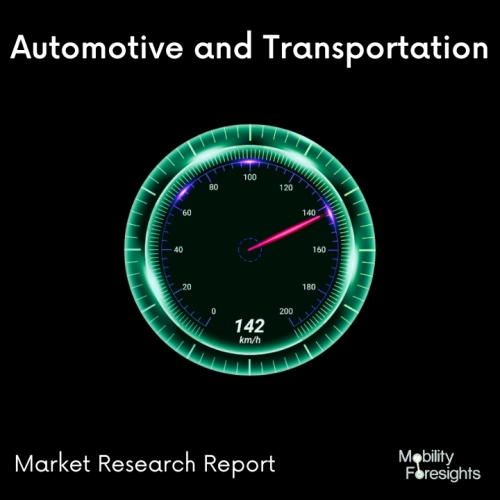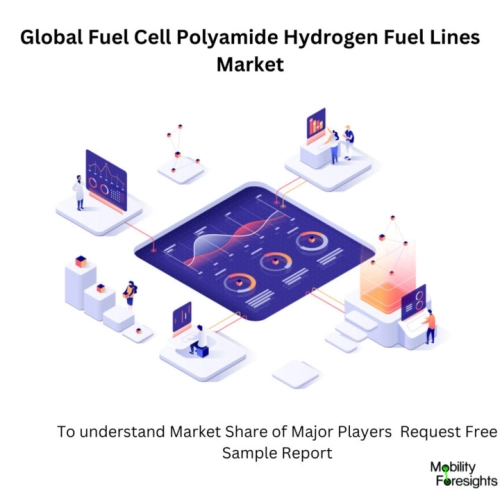
- Get in Touch with Us

Last Updated: Apr 25, 2025 | Study Period: 2023-2030
GLOBAL FUEL CELL POLYAMIDE HYDROGEN FUEL LINES MARKET
INTRODUCTION
These pipelines, which are owned by commercial hydrogen producers, are situated near areas with a high concentration of large hydrogen consumers, such as chemical and petroleum refineries, such as the Gulf Coast.
Large-scale hydrogen delivery can be done at a minimal cost by transporting gaseous hydrogen using already-existing pipes. A hose or pipe used to move fuel from one location in a car to another is called a fuel line.
A fuel line is a set of hoses or tubes used to transport fuel vapour or liquid. All hoses and tubing for the filler neck, for joining the dual fuel tanks, and for joining a carbon canister to the fuel tank fall under this category.
GLOBAL FUEL CELL POLYAMIDE HYDROGEN FUEL LINES MARKET SIZE AND FORECAST

The Global Fuel Cell Polyamide Hydrogen fuel lines market accounted for $XX Billion in 2022 and is anticipated to reach $XX Billion by 2030, registering a CAGR of XX% from 2023 to 2030.
NEW PRODUCT LAUNCH
For quick compressed hydrogen refuelling of fuel cell electric cars, Parker introduces Polyflex 2440P-04V32 HT-P Hydrogen Hose. German city of Lampertheim
The new Polyflex 2240P-04V32 HT-P Hydrogen hose was developed specifically for high pressure hydrogen refuelling of fuel cell electric vehicles and has been made available by Parker Hannifin Corporation's Polyflex Division, the world leader in motion and control technologies.
At temperatures as low as -40°C, refuelling is possible extremely quickly with ISO 19880-5 certified hoses.The nominal internal diameter of Polyflex Hydrogen Hose is 6.4 mm (1/4 inch), and its minimum bend radius is 150 mm (5.90").
Manufacturers of dispensers can get around the limitations of sluggish and low-pressure hydrogen refuelling thanks to an industry-leading 875 bar working pressure. The hoses offer a reliable high-pressure connection that is flexible and safe between the dispenser and the passenger car.
The 2440P-04V32 HT-P hydrogen hose is a good option for operators dealing with changeable and unpredictable operating conditions at gasoline stations because it has been pressure tested to H70, mostly in accordance with ISO DIS 19880-5.
The most recent hydrogen hose from Parker has an inner core tube made of high-performance thermoplastic that is shielded by four layers of high-tensile wire reinforcement.
The 2440P-04V32 HT-P Hydrogen hose is ideally suited for H70 pressure class dispenser applications because of its wide operating temperature range of -40°F to +185°F (-40°C to +85°C), high cleanliness, and exceptionally low penetration rate.
"Its tight bend radius allows space-saving installations, and its high abrasion resistance as well as high ozone and UV resistant cover assist deployment outdoors and reduce the risk of abrasion-related difficulties as well as cover fractures," according to the new Hydrogen Dispenser Hose.
COMPANY PROFILE
THIS REPORT WILL ANSWER FOLLOWING QUESTIONS
| Sl no | Topic |
| 1 | Market Segmentation |
| 2 | Scope of the report |
| 3 | Abbreviations |
| 4 | Research Methodology |
| 5 | Executive Summary |
| 6 | Introduction |
| 7 | Insights from Industry stakeholders |
| 8 | Cost breakdown of Product by sub-components and average profit margin |
| 9 | Disruptive innovation in the Industry |
| 10 | Technology trends in the Industry |
| 11 | Consumer trends in the industry |
| 12 | Recent Production Milestones |
| 13 | Component Manufacturing in US, EU and China |
| 14 | COVID-19 impact on overall market |
| 15 | COVID-19 impact on Production of components |
| 16 | COVID-19 impact on Point of sale |
| 17 | Market Segmentation, Dynamics and Forecast by Geography, 2023-2030 |
| 18 | Market Segmentation, Dynamics and Forecast by Product Type, 2023-2030 |
| 19 | Market Segmentation, Dynamics and Forecast by Application, 2023-2030 |
| 20 | Market Segmentation, Dynamics and Forecast by End use, 2023-2030 |
| 21 | Product installation rate by OEM, 2023 |
| 22 | Incline/Decline in Average B-2-B selling price in past 5 years |
| 23 | Competition from substitute products |
| 24 | Gross margin and average profitability of suppliers |
| 25 | New product development in past 12 months |
| 26 | M&A in past 12 months |
| 27 | Growth strategy of leading players |
| 28 | Market share of vendors, 2023 |
| 29 | Company Profiles |
| 30 | Unmet needs and opportunity for new suppliers |
| 31 | Conclusion |
| 32 | Appendix |